This article was co-authored by Tami Claytor. Tami Claytor is an Etiquette Coach, Image Consultant, and the Owner of Always Appropriate Image and Etiquette Consulting in New York, New York. With over 20 years of experience, Tami specializes in teaching etiquette classes to individuals, students, companies, and community organizations. Tami has spent decades studying cultures through her extensive travels across five continents and has created cultural diversity workshops to promote social justice and cross-cultural awareness. She holds a BA in Economics with a concentration in International Relations from Clark University. Tami studied at the Ophelia DeVore School of Charm and the Fashion Institute of Technology, where she earned her Image Consultant Certification.
There are 7 references cited in this article, which can be found at the bottom of the page.
This article has been viewed 626,418 times.
Addressing an envelope to a single person is a cinch - all you need is their name and title and you're ready to go.[1] Addressing an envelope to a whole family, however, is a different matter. There are several different ways to address an envelope to a family, each with its own subtleties to consider. Though no single process is terribly difficult, understanding when (and how) to use each can be helpful for the purposes of etiquette. See Step 1 below to get started!
Steps
Using the Family Name
-
1Write "The (Surname) Family" at the top of the address.[2] When you're looking to address an envelope to an entire family, rather than a single individual, you have two options: you can use the family name to represent the entire family, or you can specifically address the envelope to some (or all) of the family members. Let's tackle the first option first. The easiest way to address an envelope to an entire family is simply write "The (Last Name of the Family) Family" as the first line of your address. This method is a good choice for general communications (like friendly letters) but may be unwise for addressing envelopes in which it's important to know who the letter is specifically for (like wedding invitations).
- For example, if we're writing a letter to Tim and Janet Jones and their children Emma and Peter, we would address the envelope to The Jones Family.[3]
-
2Use the plural form of the family name.[4] As an alternative to the above, it's also acceptable to simply use the plural form of the family's surname as the first line of the envelope's address. In this case, the plural family name is always preceded by the word "The" so that the final result is in the form of "The Smiths", "The Garcias", and so on.
- Don't fall into the trap of using apostrophes here. Apostrophes are used to convey possession, not to make a word plural, so you shouldn't use them in the plural form of the family name. Most family names simply need an -s at the end to become plural (e.g. Thompsons, Lincolns). However, family names that end with an "s", "sh", or "x" sound usually need an -es at the end (e.g. Roses, Foxes, Welshes).
- Following our example above, if we're writing a letter to the Jones family, in addition to using "The Jones Family" as the first line of our address, we can also simply use The Joneses.
Advertisement -
3Address the rest of the envelope as normal. Regardless of the method you use for the first line of your envelope's address, the rest of the address is written as it would be for any other letter.[5] Under the first line containing the family name, write the street number or PO box, then, on the next line, write the city, state/province, postal code, and so on. If writing internationally, write the name of the country below on a separate fourth line. Write your return address in the same fashion in the top left corner of the envelope. For more information, see How to Write an Address on an Envelope.
- For example, in our Jones family example, our final address might look something like this:
- The Jones Family (or "The Joneses")
- 21 Jump Street
- Anytown, CA, 98765
- As a general rule, whenever you're addressing an envelope to a family, the first line of the address is the one you'll change — the actual street address should remain untouched. In the following methods described below, it is to be assumed that the portion of the address following the "name" line should be written as normal.
- For example, in our Jones family example, our final address might look something like this:
Using Specific Family Members' Names
-
1Begin with the parents' names and titles. When addressing an envelope to an entire family, in addition to using the family name to stand for all of the family's members, you can also name some or all of them individually.[6] This method is useful for letters such as wedding invitations in which it's important to convey who specifically the letter is for. To begin, on the first line of your address, write the parents' names. In most cases, you will want to use their appropriate titles (Mr. and Mrs. are always safe, while titles like "Dr.", "Judge", and so on are usually optional outside of formal or professional contexts).
- For example, If we're inviting the Jones family to a housewarming party, we would start by writing the parents' names on the first line: Mr. and Mrs. Jones.
- It's also acceptable to use the traditional form of describing married couples in which the husband's full name serves for both partners: Mr. and Mrs. Tim Jones. However, this method isn't necessary.
- Finally, you can also write each partner's full name, sans titles: Tim and Janet Jones. This is usually done in familiar, informal contexts, as using someone's first name rather than his or her title can be seen as rude if you don't know him or her well.
-
2Follow with any children's names. On the next line, list the names of children who are under 18 and live as dependents of the parents. You can provide the family name once at the end of the list of children's names (e.g., David, Chelsea, and Gabriela Richardson), or you can leave it out entirely (e.g., David, Chelsea, and Gabriela). If you know the ages of the children, list them from oldest to youngest.
- For example, in our example party invitation scenario, we would write the names of the children in the family below the parent's names like so: Emma and Peter. This means that the first two lines of our address would look something like this:
- Mr. and Mrs. Jones
- Emma and Peter
- For example, in our example party invitation scenario, we would write the names of the children in the family below the parent's names like so: Emma and Peter. This means that the first two lines of our address would look something like this:
-
3Alternatively, write the parents' names followed by "and Family". In situations where you don't know the names of any or all children in the family, it's acceptable to refer to children collectively. In this case, on the second line where you would normally name the children, write "and Family". You may also use "and Children" to make your intent more specific.
- In our example, we could replace Emma and Peter's names with the phrase "and Family" or "and Children" if we had forgotten their names. In this case, the first two lines of our address would look like this:
- Mr. and Mrs. Jones
- and Children
- In our example, we could replace Emma and Peter's names with the phrase "and Family" or "and Children" if we had forgotten their names. In this case, the first two lines of our address would look like this:
-
4Omit children's names if the letter isn't intended for them.[7] The above examples assume that the letter is intended for both the parents and the children in the family. If this is not the case, name the relevant recipients in the first line, then proceed immediately to the street address without using the second line to list additional family members.
- If, for instance, we wanted only to invite the parents in the Jones family to our party, we would use the standard Mr. and Mrs. Jones without naming any of their children.
-
5Send separate letters to children over 18.[8] If the family contains any children over 18 (or the traditional age of adulthood in the recipient's community), send these children their own, separate letter in addition to the one you send to their parents. Receiving your own mail is a sign of adulthood. Though it's relatively minor, it can be perceived as somewhat insulting to, for instance, be invited to a party via a letter addressed to one's parents.
Using an Inner and Outer Envelope
-
1Address the outer envelope to the parents only. Some types of letters make a point of requesting a response from the recipient. In situations like these, a small, usually pre-addressed reply envelope is often included inside the outer envelope. If you're mailing a letter like this, it's worth noting that the outer and inner envelopes are usually addressed slightly differently when the recipient is an entire family. To start, address the outer envelope (the one in which the contents of the letter and the second envelope are contained) with only the names of the parents or heads of the household.
- For the outer envelope, write the parents' names as described in the section above. For example, if you're inviting the entire Jones family to your wedding, for the outer envelope, you would only write the names of the parents: Mr. and Mrs. Jones, Mr. and Mrs. Tim Jones, or Tim and Janet Jones.
-
2Address the inner envelope to all the recipients. For the inner return envelope, the rules differ somewhat. If you're requesting a response for every member of the family (for instance, if you're inviting the entire family to your wedding), write the parents' names on the first line of the address and the children's names underneath on the second line.[9] If, however, you're only requesting a response from the parents, you would only write their names on the first line of the address, then proceed to the street address and so on.
- Note that the directions for the inner envelope refer to its return address. Obviously, the main address that tells where the envelope is being sent will be your own (or that of a relevant agency, business, PO box, etc.) so that their reply will be sent to the correct place.
- In our wedding invitation example, if we're inviting the entire family, the return address of the inner envelope would have the parents' names on the first line followed by the names of the children on the second. The first two lines of the inner envelope's return address would look something like this:
- Mr. and Mrs. Jones
- Emma and Peter
-
3Include a stamp on the return envelope. Regardless of who specifically you're requesting a response from, it's always a sign of courtesy to pre-stamp your letter's return envelope. Stamps are relatively cheap, so including a stamp on the return envelope is more a sign of respect and care than it is actual financial aid. Still, it's usually best to avoid a minor faux pas by taking the time to give your letter's return envelope a stamp
- As above, you should send separate letters to children who are over 18 (or are considered independent adults according to some other standard). In situations where you're sending letters with included return envelopes, this means that you'll need to address and stamp each return envelope with the name of the over-18 child in the return address as well.
Expert Q&A
-
QuestionShould I send holiday cards individually or to the whole family?
 Tami ClaytorTami Claytor is an Etiquette Coach, Image Consultant, and the Owner of Always Appropriate Image and Etiquette Consulting in New York, New York. With over 20 years of experience, Tami specializes in teaching etiquette classes to individuals, students, companies, and community organizations. Tami has spent decades studying cultures through her extensive travels across five continents and has created cultural diversity workshops to promote social justice and cross-cultural awareness. She holds a BA in Economics with a concentration in International Relations from Clark University. Tami studied at the Ophelia DeVore School of Charm and the Fashion Institute of Technology, where she earned her Image Consultant Certification.
Tami ClaytorTami Claytor is an Etiquette Coach, Image Consultant, and the Owner of Always Appropriate Image and Etiquette Consulting in New York, New York. With over 20 years of experience, Tami specializes in teaching etiquette classes to individuals, students, companies, and community organizations. Tami has spent decades studying cultures through her extensive travels across five continents and has created cultural diversity workshops to promote social justice and cross-cultural awareness. She holds a BA in Economics with a concentration in International Relations from Clark University. Tami studied at the Ophelia DeVore School of Charm and the Fashion Institute of Technology, where she earned her Image Consultant Certification.
Etiquette Coach That depends. If there are young children in the house, send them an age-appropriate card—it'll make them feel grown up. If the home is filled with parents and adult children, you can just address the card to "The Smith Family." You could also send individual cards to family members if they don't live together.
That depends. If there are young children in the house, send them an age-appropriate card—it'll make them feel grown up. If the home is filled with parents and adult children, you can just address the card to "The Smith Family." You could also send individual cards to family members if they don't live together. -
QuestionCan I address a graduation invitation by using the husband's first and last name followed by et al?
 Community Answer"Et al" is very businesslike; it's more for a company president and his assorted associates. Go with "To Mr. John & Mrs. Jill McGuffin and Family" or "To Mr. & Mrs. John McGuffin and Family."
Community Answer"Et al" is very businesslike; it's more for a company president and his assorted associates. Go with "To Mr. John & Mrs. Jill McGuffin and Family" or "To Mr. & Mrs. John McGuffin and Family." -
QuestionIf there is only a Mr. and a Mrs. in a family, is it wrong to write The Jones Family?
 Community AnswerNo. It might technically be more appropriate to address the envelope to Mr. and Mrs. Jones, but a family can consist of only a couple.
Community AnswerNo. It might technically be more appropriate to address the envelope to Mr. and Mrs. Jones, but a family can consist of only a couple.
References
- ↑ https://corporatefinanceinstitute.com/resources/careers/how-to-job-guides/how-to-address-a-letter/
- ↑ https://classroom.synonym.com/how-to-address-an-envelope-to-a-family-12078711.html
- ↑ Tami Claytor. Etiquette Coach. Expert Interview. 20 May 2021.
- ↑ https://holidappy.com/greeting-cards/Address_it_right
- ↑ https://corporatefinanceinstitute.com/resources/careers/how-to-job-guides/how-to-address-a-letter/
- ↑ https://www.formsofaddress.info/family/
- ↑ https://www.theknot.com/content/addressing-wedding-invitations
- ↑ https://www.theknot.com/content/addressing-wedding-invitations
- ↑ https://www.theamericanwedding.com/wedding-invitations-guide/innerenvelopes/
About This Article
To address an envelope to a family, write, “The (Surname) Family” above their address on the front of the envelope. For example, to write a letter to Tim and Janet Smith and their kids, you would write, “The Smith Family.” Similarly, you can use the plural version of their last name, such as “The Smiths”. Alternatively, you can use the parents’ names and titles followed by the words, “and Family,” or “and Children.” For tips on when you should omit children from the address on the envelope, read on!
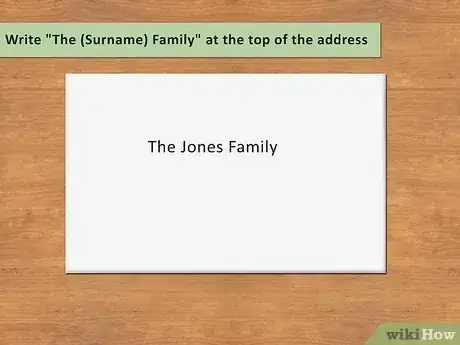



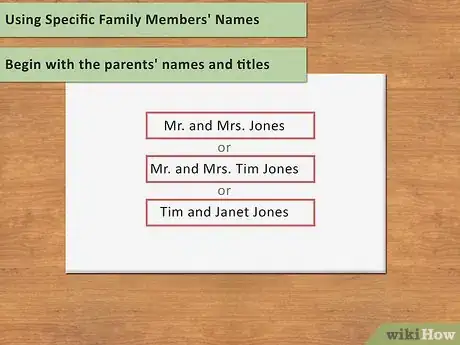


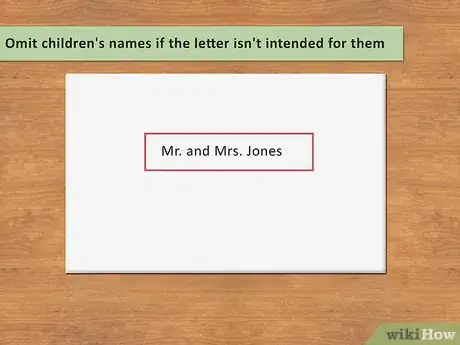





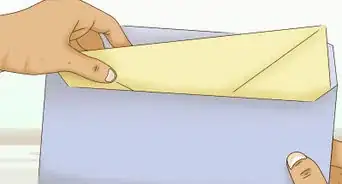
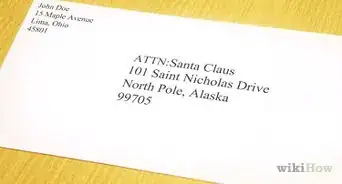






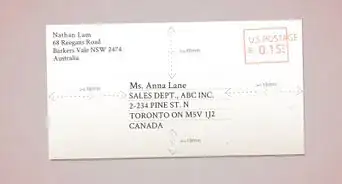

-Step-18-Version-3.webp)















































